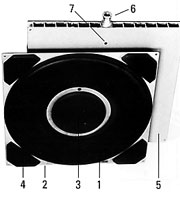Less Floor Damage
Compared to wheeled transports, an air bearing system spreads the load weight over a much larger floor surface area. This minimizes, if not eliminates, point loading and floor damage.
Reduced Friction
Air bearings provide an extremely low coefficient of friction. In theory, there is no direct contact between the air bearing element and the floor beneath. When the system is energized, the load glides solely on a film of air. In many applications, loads weighing several tons can be moved easily by hand.
Unlimited Direction and Positioning
Riding on air, even the largest loads can be transported, turned, or rotated in any direction and then positioned precisely. This is a great advantage when moves involve hallways, doorways, and tight spaces.
Reduced Vibrations
The inflated rubber torus bag of the air bearing provides a cushioning effect, dampening vibrations as seen by the load. This is important when moving loads such as glass or sensitive machinery.
Economy
Especially as load weights increase, the cost benefits of an air bearing system are apparent. Compare the cost of air bearings to that of forklifts, overhead cranes, or track systems.
Enhanced Safety
There is less risk of accidents when transporting on air bearings. This is because the load weight is hovering only a fraction of a millimeter above the floor. There are no chains, axels, wheels, or other rotating, wear-bearing parts. The power being air, there are no exhaust emissions, combustible gases or oils, or electrical contacts.
Low Profile
Some air bearing systems require as little as 1-1/2 inches floor clearance for placement beneath a load.
Low Noise
When operating on a proper floor surface, air bearings are practically silent.
Low maintenance
The simplest air bearing systems can operate effectively for years with almost no required maintenance.
See all of Solving's products.



 The circular, rubber torus bag inflates and fills the gap between the mounting plate and the floor
The circular, rubber torus bag inflates and fills the gap between the mounting plate and the floor As air pressure increases, the mounting plate with landing pads lifts off the floor
As air pressure increases, the mounting plate with landing pads lifts off the floor When air pressure in the air bearing is higher than the counter pressure of the load, the air flows out from the torus bag to form a thin air film on which the air bearing module and load floats, practically friction-free
When air pressure in the air bearing is higher than the counter pressure of the load, the air flows out from the torus bag to form a thin air film on which the air bearing module and load floats, practically friction-free